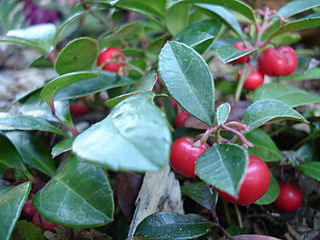
Gaultheria procumbens, also called the eastern teaberry, the checkerberry, the boxberry, or the American wintergreen, is a species of Gaultheria native to northeastern North America from Newfoundland west to southeastern Manitoba, and south to Alabama. It is a member of the Ericaceae.

Betula alleghaniensis, the yellow birch, golden birch, or swamp birch, is a large tree and an important lumber species of birch native to northeastern North America. Its vernacular names refer to the golden color of the tree's bark. In the past its scientific name was Betula lutea.
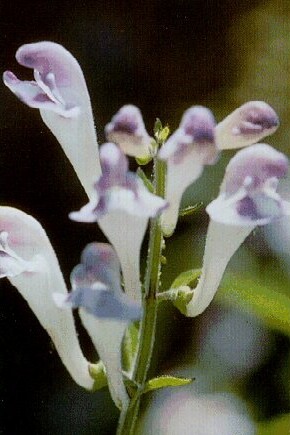
Scutellaria montana, with the common names largeflower skullcap, large-flowered skullcap and mountain skullcap, is an perennial forb first described by Alvan Chapman in 1878. This narrowly endemic species is found in the southeastern United States in parts of the Ridge and Valley and Cumberland Plateau Physiographic Provinces. Populations have been documented from four Tennessee counties and nine Georgia counties and is protected under the US Endangered Species act as it is a threatened species. The Latin specific epithet montana refers to mountains or coming from mountains.
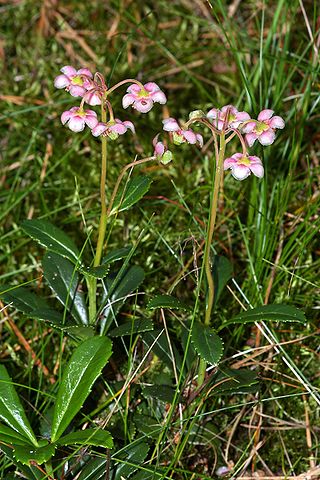
Chimaphila umbellata, the umbellate wintergreen, pipsissewa, or prince's pine, is a small perennial flowering plant found in dry woodlands, or sandy soils. It is native throughout the cool temperate Northern Hemisphere.

Cicuta maculata is a highly poisonous species of flowering plant in the carrot family known by several common names, including spotted water hemlock, spotted parsley, spotted cowbane, and the suicide root by the Iroquois. It is native to nearly all of North America, from northern Canada to southern Mexico.
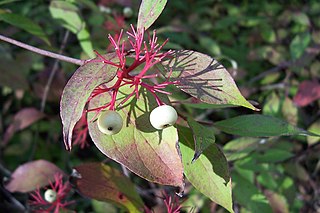
Cornus sericea, the red osier or red-osier dogwood, is a species of flowering plant in the family Cornaceae, native to much of North America. It has sometimes been considered a synonym of the Asian species Cornus alba. Other names include red brush, red willow, redstem dogwood, redtwig dogwood, red-rood, American dogwood, creek dogwood, and western dogwood.

Chimaphila is a genus of five species of small, evergreen, flowering plants native to temperate regions of the Northern Hemisphere. They are classified in the family Ericaceae, but were formerly placed in the segregate family Pyrolaceae.

Neottia ovata, the common twayblade or eggleaf twayblade, is a terrestrial orchid widespread across much of Europe and Asia

Lamium maculatum is a species of flowering plant in the family Lamiaceae, native throughout Europe and temperate Asia.
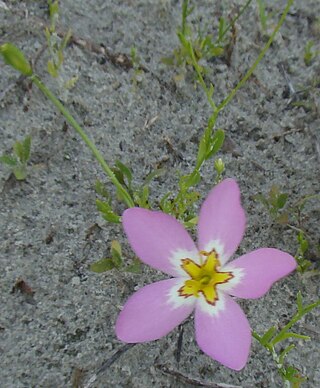
Sabatia stellaris, with the common names rose of Plymouth, marsh pink, salt-marsh pink, and sea-pink; is a species of Sabatia. It has the synonym Sabatia maculata (Benth.) Benth. & Hook.f., Sabatia palmeri Gray, Sabatia purpusii Brandeg., Sabatia simulata Britt.).

Dactylorhiza maculata, known as the heath spotted-orchid or moorland spotted orchid, is an herbaceous perennial plant of the family Orchidaceae. It is widespread in mountainous regions across much of Europe from Portugal and Iceland east to Russia. It is also found in Algeria, Morocco, and western Siberia.

Sicyos angulatus, the oneseed bur cucumber or star-cucumber is an annual vine in the gourd family, Cucurbitaceae, native to eastern North America. The plant forms mats or climbs using tendrils. The leaves are palmately veined and lobed, the flowers are green to yellowish green, and the fruits form clusters of very small pepos.

Chimaphila menziesii, known by the common names little prince's pine and Little Pipsissewa, is a species of perennial wildflower in the heath family.

Corallorhiza striata is a species of orchid known by the common names striped coralroot and hooded coralroot. This flowering plant is widespread across much of southern Canada, the northern and western United States, and Mexico. It lives in dry, decaying plant matter on the ground in pine and mixed coniferous forests, and it obtains its nutrients from fungi via mycoheterotrophy.

Buchnera americana, commonly known as American bluehearts or bupleurum, is a locally endangered herbaceous perennial plant of the broomrape family Orobanchaceae. Found widely across the eastern United States, it also occurs in one location in the Canadian province of Ontario.
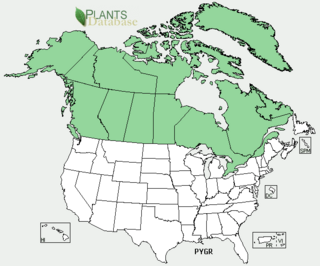
Pyrola grandiflora (, commonly known as Arctic wintergreen or largeflowered wintergreen, is a hardy perennial evergreen subshrub in the family Ericaceae. It is widely distributed in the Northern Hemisphere from temperate to tundra-like climates.

Liparis liliifolia, known as the brown widelip orchid, lily-leaved twayblade, large twayblade, and mauve sleekwort, is a species of orchid native to eastern Canada and the eastern United States. It can be found in a variety of habitats, such as forests, shrublands, thickets, woodlands, and mountains. The orchid is considered globally secure, but it is considered rare or endangered in many northeastern states.
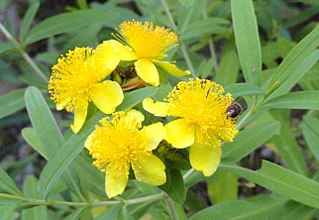
Hypericum kalmianum, commonly called Kalm's St. Johns wort or Kalm's St. Johnswort, is a flowering plant in the St. John's wort family Hypericaceae. It is native to the Great Lakes region in the northern United States and southern Canada. Hypericum kalmianum was named after its discoverer, Swedish botanist Pehr Kalm (1715-1779).

Hypericum tenuifolium, known as Atlantic St. John's-wort and sandhill St. John's-wort, is a species of flowering plant in the St. John's wort family, Hypericaceae. It is native to the Southeastern United States.





















